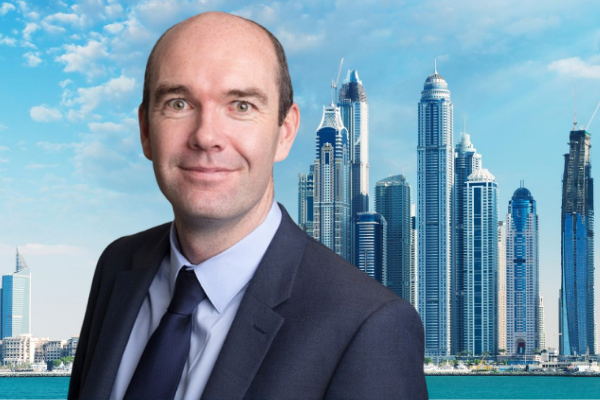Equiom: A guide to End of Service Gratuity

By Chris Cain, Client Services Director (Middle East)
If you’re a Middle East Finance or HR professional you’ll be directly aware of the need to make End of Service (EoS) benefit payments and the financial implications it creates.
It is well documented that many companies are not funding their current and future EoS adequately and instead continue to take an approach of paying out from current company reserves when employees leave. The implications of this have become more apparent recently with large scale redundancies causing significant cash flow issues for many businesses resulting in some employees who have been affected having to agree to receive their EoS entitlement in instalments rather than the full lump sum. Historically there are also examples of companies going bankrupt leaving no money to pay outstanding EoS benefits. Alongside this, EoS has long been accepted as inadequate as a retirement funding solution due to the insufficient build up in size, the cap of a maximum of 2 years’ salary and the inability for employees to personally contribute towards their retirement, should they wish to.
The tide is turning
The tide of change for retirement benefits in the Middle East is starting to turn. After years of careful planning, the Dubai International Finance Centre (DIFC) took the progressive decision to replace EoS accruals with a Defined Contribution (DC) Savings/Pension model akin to developed economies in Western countries such as the UK and US. This came into effect on 1 February 2020 with the introduction of the DIFC Employee Workplace Savings (DEWS) plan. The change made by the DIFC aims to help employers reduce the need to fund for a future liability with the introduction of the need to pay and settle this monthly. Employees are now able to view their EoS build up and choose how it is invested. They can also use the new DC arrangement to make voluntary contributions via salary deductions to accelerate their overall value (with participating employers). A change in DIFC law allows employees with pre-February 2020 entitlement to agree with their employer to ‘buy out’ historic benefits. It is widely expected that this model will become the ‘new normal’ and sweep across the UAE and GCC in the next few years, signalling the end to EoS in its current format. Further details on the new DIFC Employee Workplace Savings plan (DEWS) on which Equiom is proud to be the Master trustee, can be viewed here.
What can you do to prepare?
Companies outside the DIFC should consider the implications of this change and what they can do to plan ahead. While most businesses don’t currently fund their liability, a small percentage do. There are differing ways that companies approach the funding, each having varying benefits for employees and employers alike.
Option 1: The consolidated/lump sum funding approach
A company can opt to fund its EoS liability as a lump sum investment through a life company product or investment platform with a trust company appointed as the owner. In this way the assets are segregated from the employing company providing protection for the employees as the employer is not able to access the money without trustee approval. Also in the event of financial difficulty, the assets are not accessible by the company as the trust deed sets out the specific ways the money can be used. The investment selected by the company tends to be a low to medium option, aiming to return around 4% to 5% per annum net of fees. This investment growth can then offset any future increase in liability created by wage growth and staff growth. It is a low cost solution due to the minimal administration involved and all of the fees can be deducted from the investment.
Option 2: The consolidated/lump sum funding approach allowing employees to voluntarily save from salary
This approach takes the same format as option 1 detailed above. However, in this scenario the company also allows employees to make voluntary savings via salary deduction or bonuses into their own individual account. In this way, they can leverage the large EoS amount to drive down the charges taken by the involved parties. In the Middle East retail and private regular savings plans can be expensive and inflexible. Conversely, this type of workplace savings plan can be tailored to employees’ needs and allows access to a range of low cost investment options in multi-currency and varying levels of risk. All the details can be viewed and maintained through a secure online login. Charges can be paid by either the employer or employee or shared.
Option 3: Enhanced EoS split out by employee
This method is the most similar to the new DEWS plan. In this scenario, a monthly contribution of 12% of basic salary can be paid into a low to medium risk investment fund (standard EoS funding is usually 5.83% of basic salary up to 5 years of employment and 8.33% for 5+ years). This amount is designed to cover the EoS benefit at an enhanced rate and becomes accessible as soon as the employee leaves the employer. Alongside this EoS option, the employee is able to add voluntary contributions through salary deductions and is given the option to choose from an extensive range of investments. Voluntary contributions can be set up to be withdrawn at set dates in the year if needed. Some employers utilising this type of set up use it as a retention tool and place restrictions on ownership of the employer paid contribution based on employment duration. For example, employees who work less than 1 year they are only entitled to the EoS amount due; those who work for between 1 and 5 years receive 75% of the value and those who work for more than 5 years receive the full 100%.
Act now
By implementing one of the above options you are taking steps to secure both your company’s and your employees’ financial future. There is never a bad time to start; the earlier you begin the more prepared you will be. We are able to structure the best approach based on individual requirements and can also assist with the setting up of trust structures where appropriate.
Let us help
Equiom has been providing trust services for End of Service funding solutions and workplace savings Plans in the Middle East for almost 20 years and is able to help facilitate a wide variety of packaged solutions including investment, platform hosting and trustee services. If you would like to discuss this important subject further, contact Chris.
This article has been carefully prepared, but it has been written in general terms and should be seen as broad guidance only. The article cannot be relied upon to cover specific situations and you should not act, or refrain from acting, upon the information contained therein without obtaining specific professional advice. This is not financial advice; if you are looking for investment advice, you should seek your own professional advisor
Equiom Group, its partners, employees and agents do not accept or assume any liability or duty of care for any loss arising from any action taken or not taken by anyone in reliance on the information in this article or for any decision based on it.
Equiom Fiduciary Services (Middle East) Limited is regulated by the DFSA. Any information contained herein is intended only for Professional Clients or Market Counterparties as defined by the DFSA, and no other Person should act upon it.

Get in touch
If you have any questions, or would like to learn more about taking the next steps with Equiom, please select one of the options below.
Choose a location and contact the team Use our website form
